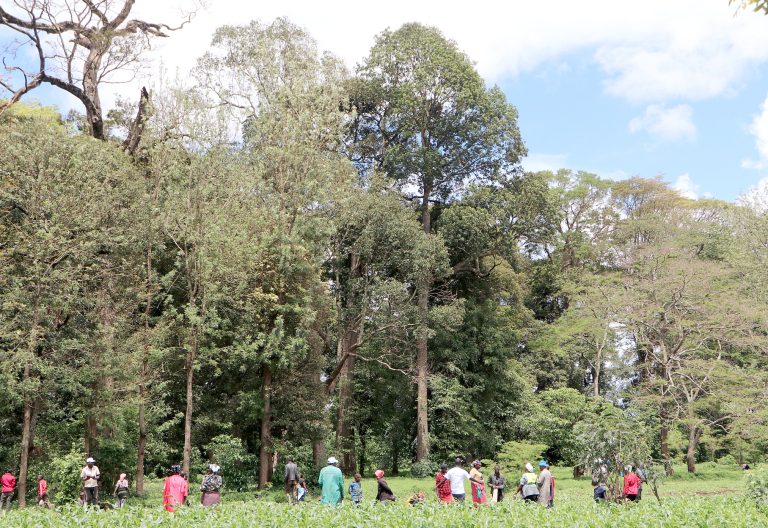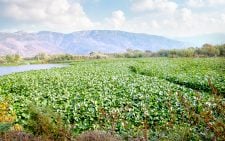Loitokitok Forest teems with life as Kenya’s highland biodiversity refuge

On the south-eastern slopes of Africa’s highest peak, Mt Kilimanjaro, lies the Loitokitok Forest, a highland shelter that not only provides scenic beauty but also plays a vital ecological and conservation role on Kenya’s side of the iconic mountain.
Located in Kajiado South Constituency within Kajiado County, the forest sits just outside Loitokitok town, approximately 220 kilometres from Nairobi. It links the Kenya-Tanzania border, spanning 765.8 hectares, and remains the only surviving highland forest on this side of the mountain.
A journey along the Nairobi-Mombasa highway, turning off near Emali town, leads to this natural gem that boasts stunning views of Kilimanjaro, the Chyulu Hills, and the surrounding countryside.
The forest is as diverse in terrain as it is in purpose, with indigenous woodland covering 256 hectares, plantations spread across 440.1 hectares, and other areas reserved for institutions and community use.
Its topography is defined by valleys, dry riverbeds, and slopes that feed various rivers.
Notably, the Naromoru and Kimengelia rivers originate from this forest, flowing downstream toward local farms and communities.
According to Tome Saitoti, the station manager of Loitokitok Forest, the area was gazetted in 1977 with the purpose of conserving its rich biodiversity and establishing plantations of exotic tree species.
“The forest stretches across 7.66 square kilometres, with a boundary of 7.19 kilometres. About 5 kilometres of this is the shared border with Tanzania, often referred to as ‘No Man’s Land,’” Saitoti says.
Natures school
Managed by the Kenya Forest Service (KFS), the forest is patrolled daily by rangers to protect against encroachment and illegal activities. It has also been divided into two beats, Kikelelwa and Kimengelia, for easier management and monitoring.
“We have enhanced 24-hour patrols to ensure the forest is safeguarded. This vigilance has helped curb illegal logging and preserve animal habitats,” Roselyn Kenga, a forest ranger, reveals.
Loitokitok Forest has also become a destination for learning and environmental activities. Students, including those from the Kenya Medical Training College (KMTC), frequently visit for tree planting and ecological studies. Security forces and other organised groups also use the forest for training and nature walks.
“There is a beehive of activities here. From pruning and herbal medicine collection to nature walks and waterfall explorations, the forest is alive with purpose,” Saitoti shares.
Loitokitok Forest serves as a refuge for over 21 animal species, including leopards, olive baboons, black-faced vervet monkeys, and the elusive lesser galago (bush baby). The forest is also home to 19 recorded bird species, offering birdwatchers a unique experience.
The canopy is composed of over 35 indigenous and exotic tree species, supported by consistent reforestation efforts.
As of May 2025, more than 251,679 seedlings have been planted in the area under the Forest Landscape Restoration (FLR) initiative spearheaded by the World-Wide Fund for Nature (WWF).
“These seedlings are either planted within the forest or donated to community members for agroforestry. Our goal is not just conservation but also community empowerment,” Saitoti explains.
Loitokitok Forest is protected under the Kenya Forest Conservation and Management Act, which provides a legal framework for its preservation.
The law enforces sustainable practices, prohibits illegal encroachment, and promotes public awareness about the value of forests.
The forest is maintained on a daily basis to avoid pollution and keep it clean.
What makes the forest’s success even more remarkable is the close collaboration between KFS and the local community.
The forest management has worked closely with the local community to help maintain and preserve the forest since 1977, which has enhanced a sense of ownership and responsibility for protecting the Oloitokitok Forest on the Kenya-Tanzania border.
“The community has been instrumental in conserving the forest,” Saitoti says, adding that they help with reforestation, patrols and spreading awareness.
According to him, their involvement gives them a sense of ownership.
This partnership has created a model for community-based forest conservation in Kenya.
It has also fostered environmental stewardship in a region where forest cover is otherwise limited.
“The Kenya Forest Conservation and Management Act provides the legal formation for managing the forest, including engaging in enforcing regulations, promoting sustainable practices and educating the public. These efforts aim to protect the forest resources and maintain their ecological integrity,” Saitoti highlights.
Sustainable practices
While Tanzania still holds the largest forest cover in the Mountain, Kenya, through the Kenya Forest Service, has done an incredible job over the years in preserving and conserving such a Forest.
While Tanzania retains the majority of Kilimanjaro’s forest cover, Kenya’s effort to conserve its small but vital portion is commendable.
It not only sustains local biodiversity but also contributes to global climate mitigation efforts by sequestering carbon and preserving vital water catchments.
Its location on the border between two nations gives it international significance, attracting visitors interested in nature, geography, and cross-border conservation.
As Kenya continues to expand its green legacy, Loitokitok Forest stands tall both literally and figuratively as a symbol of environmental resilience and cooperation.
A rare and beautiful forest perched on the edge of a continent’s rooftop, it reminds us of nature’s power, fragility, and the importance of collective responsibility in preserving our shared heritage.













